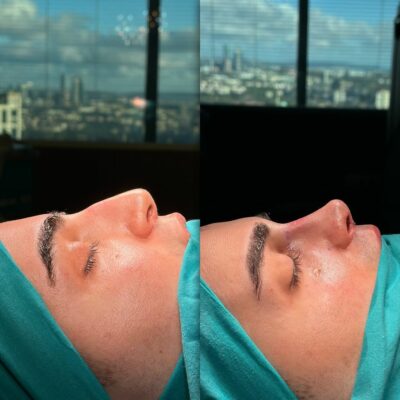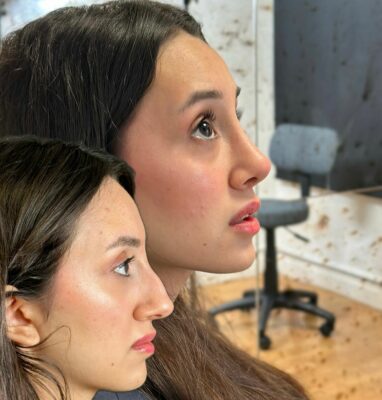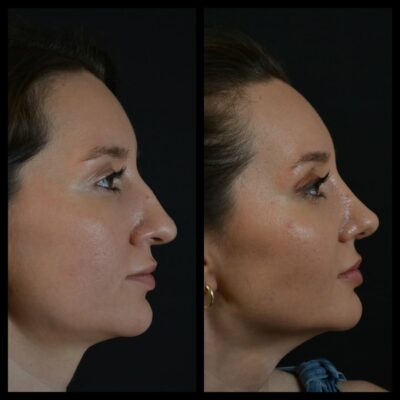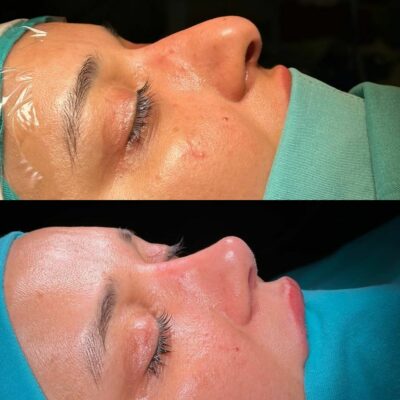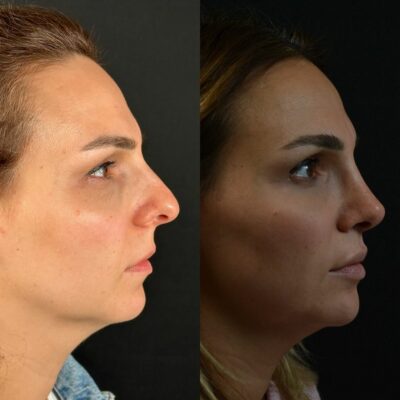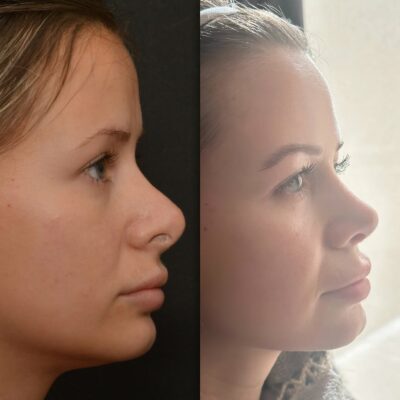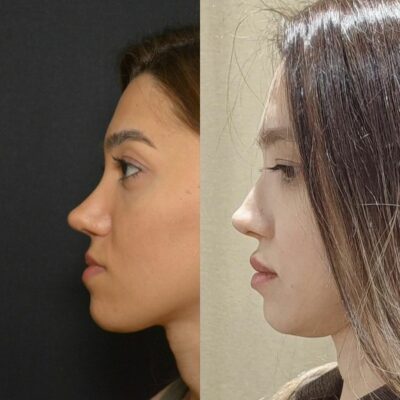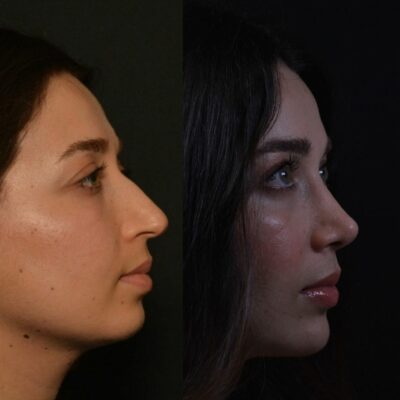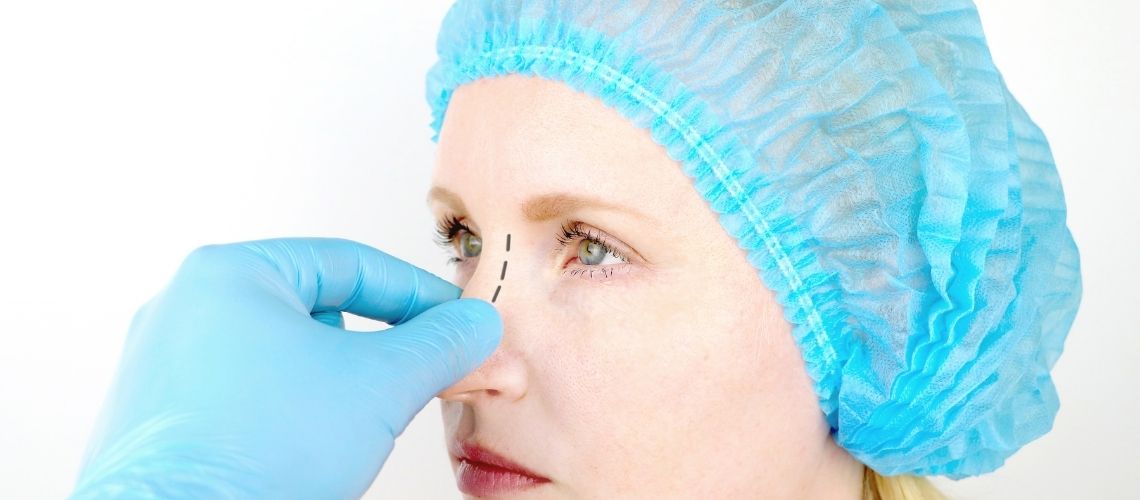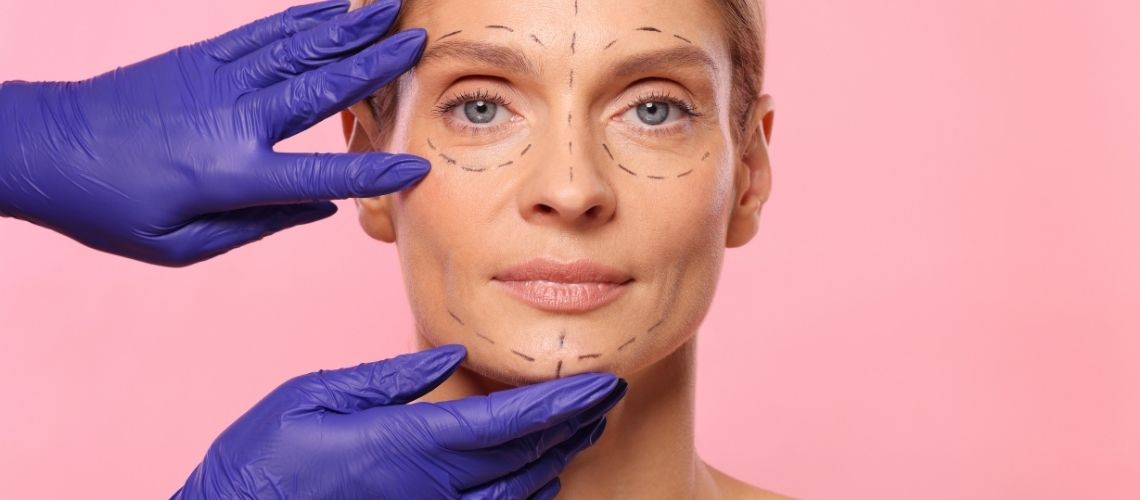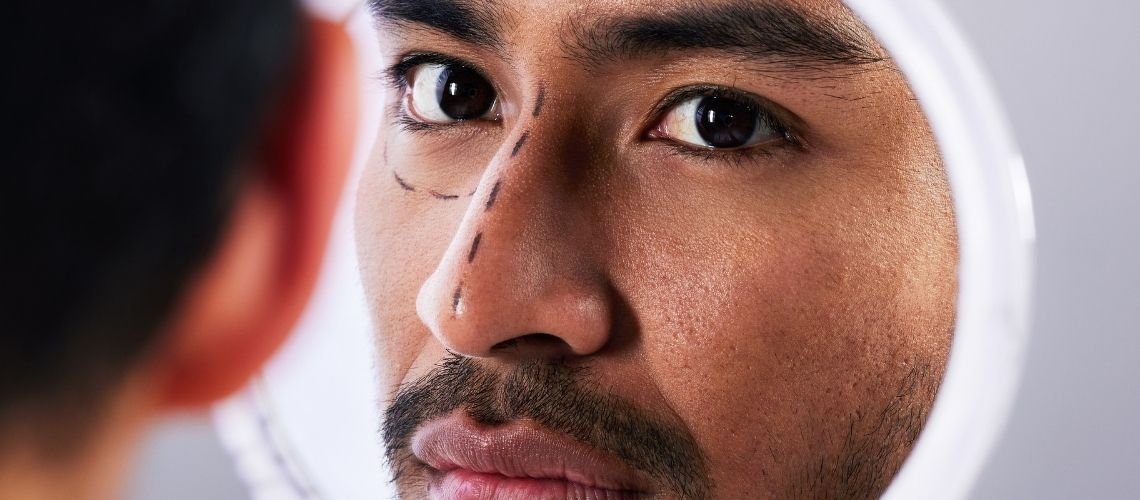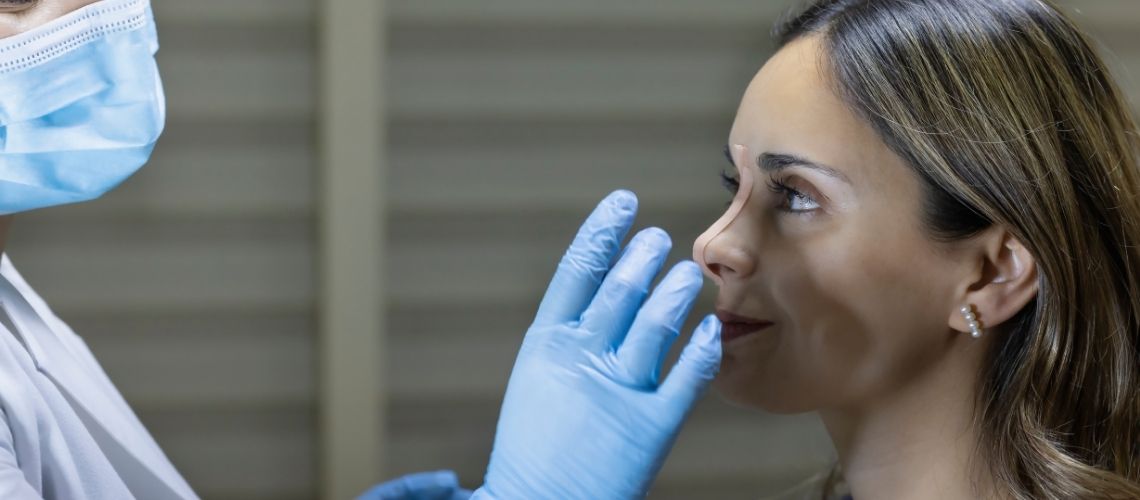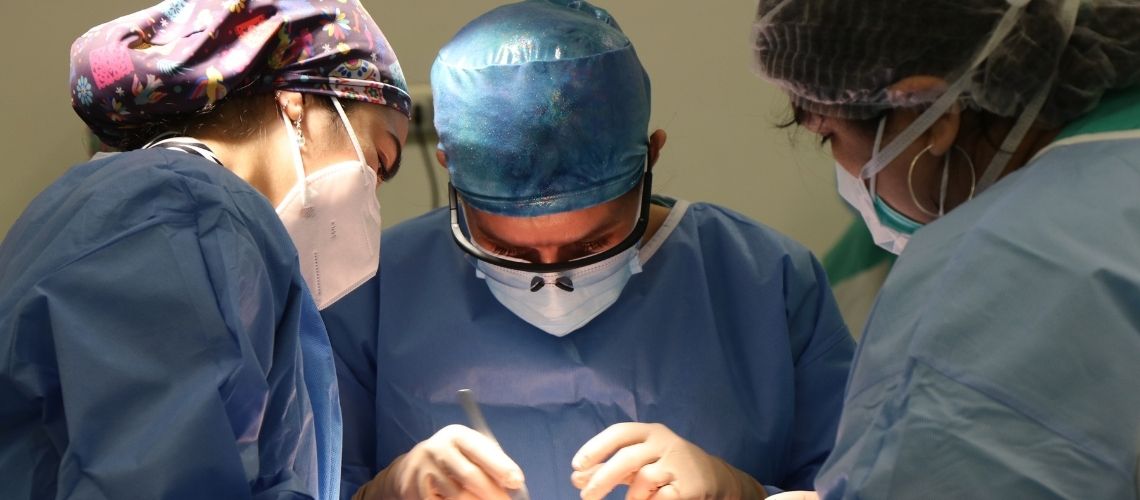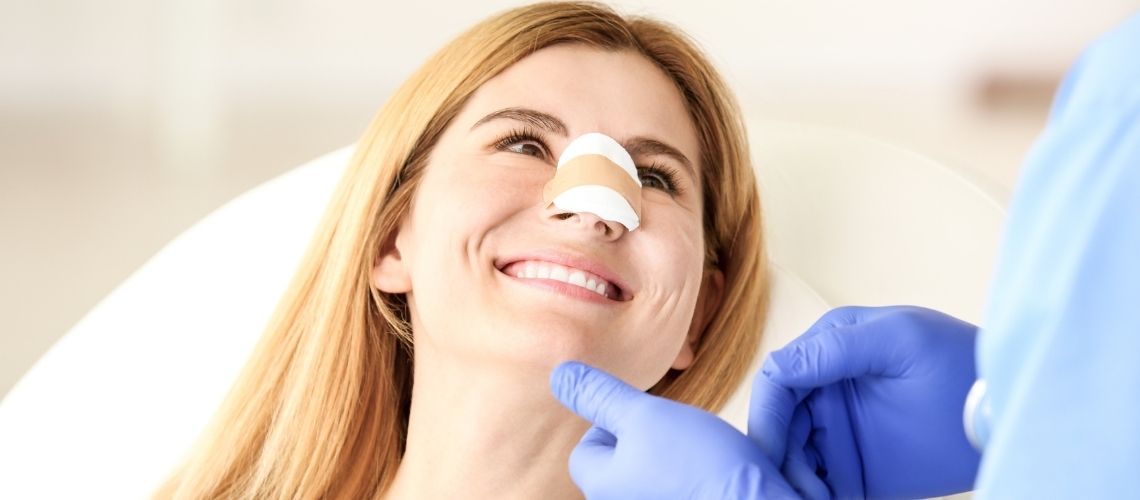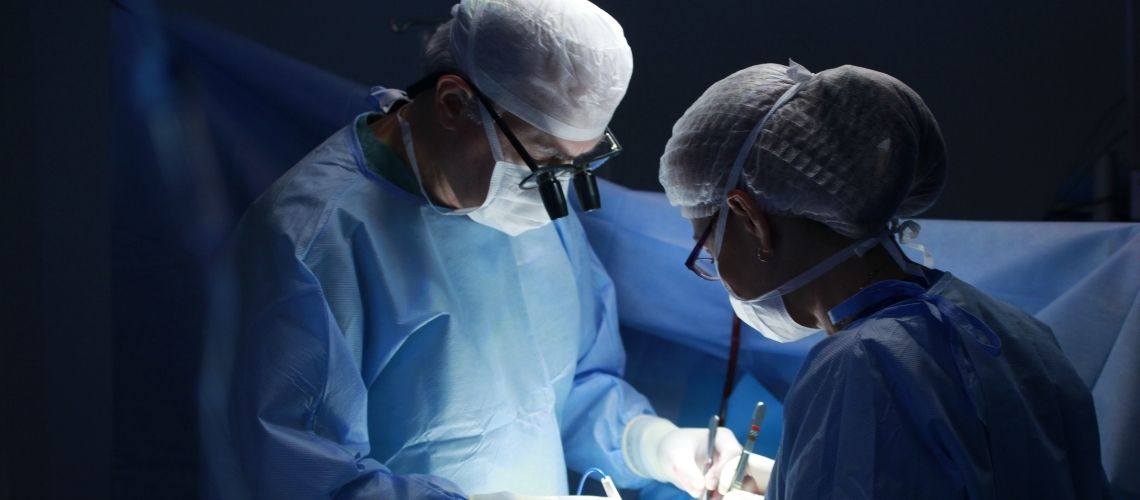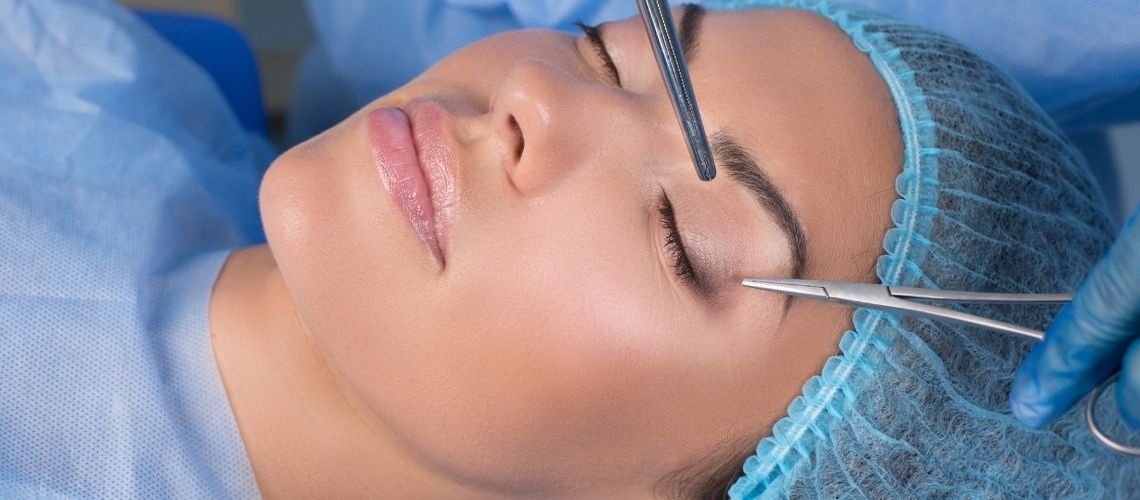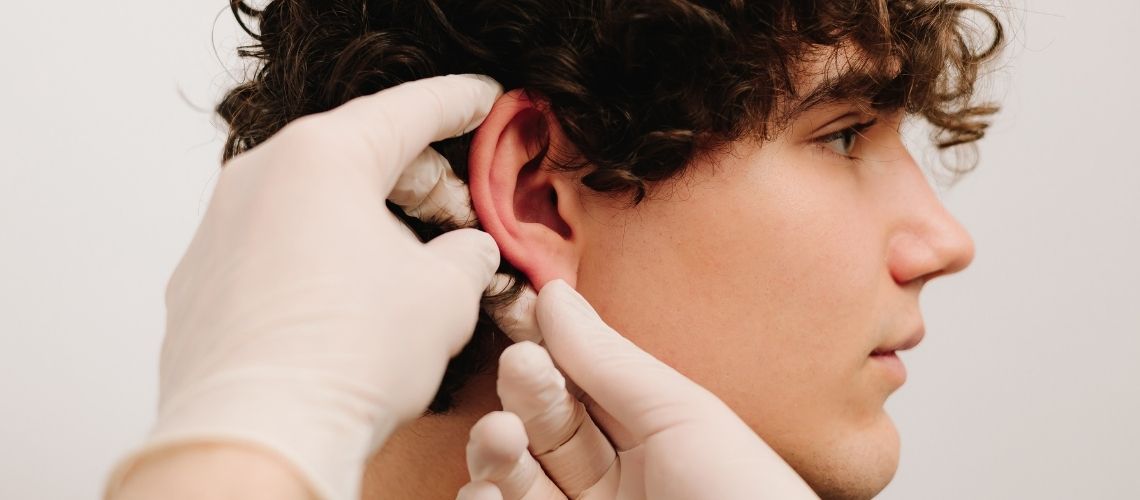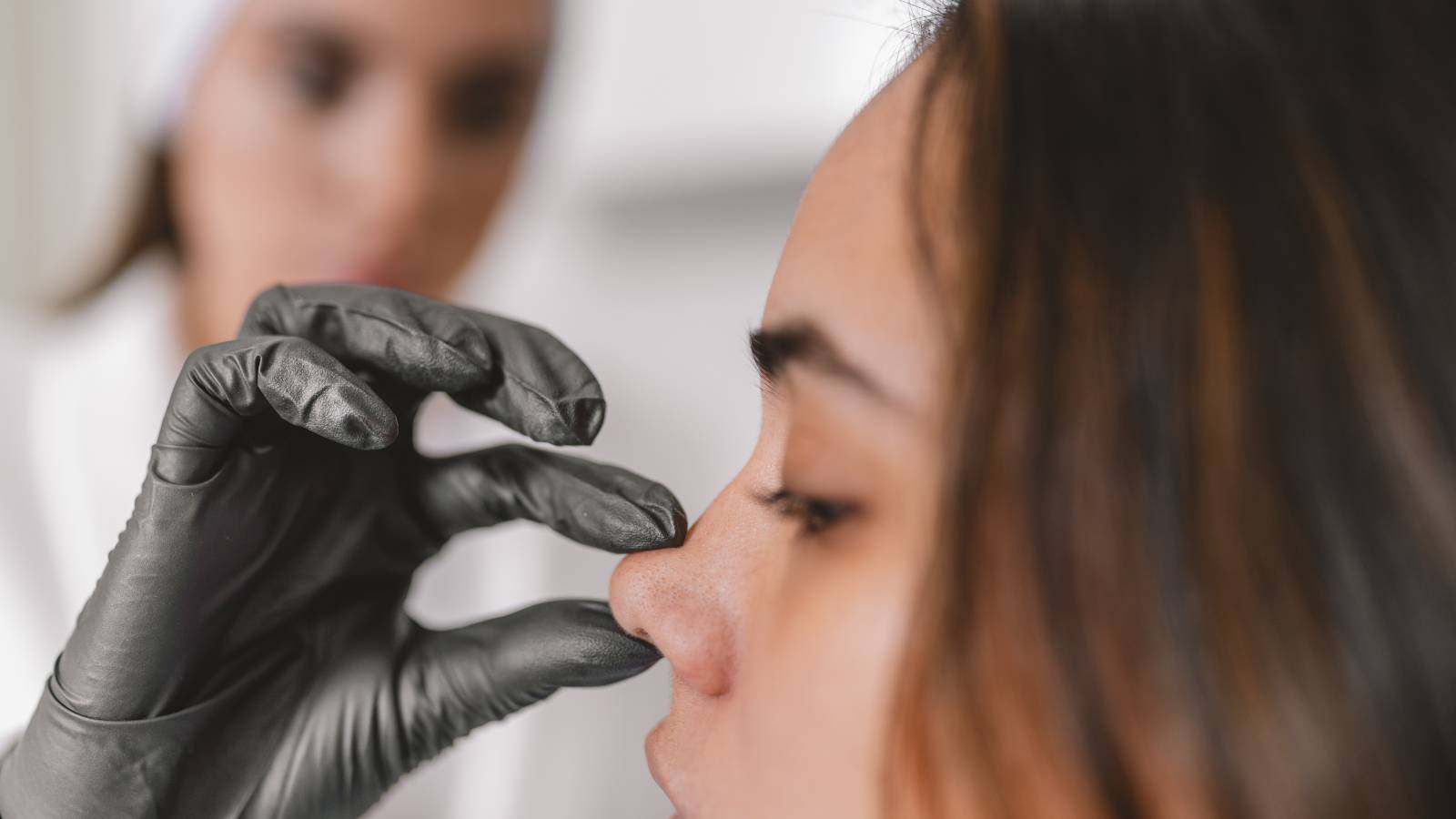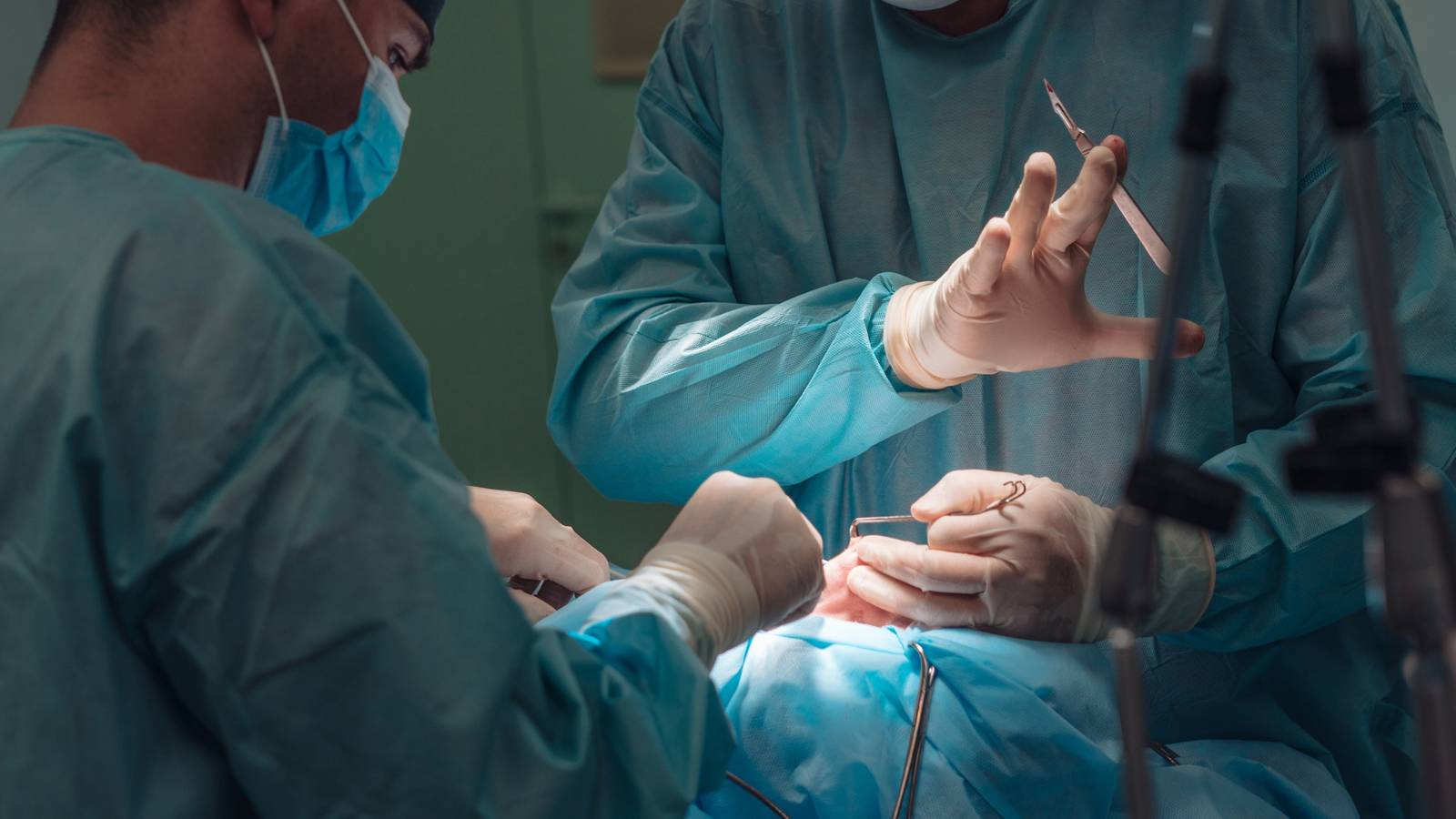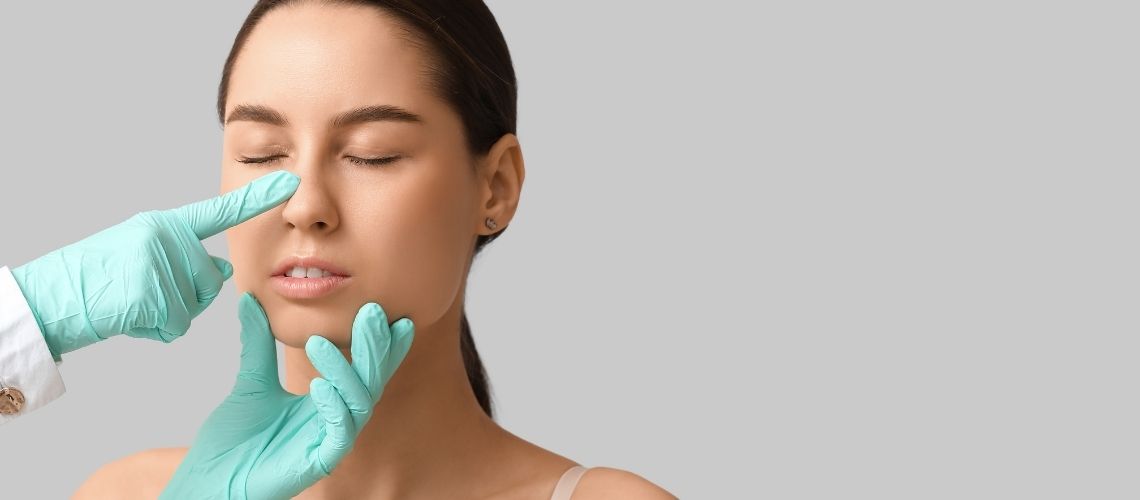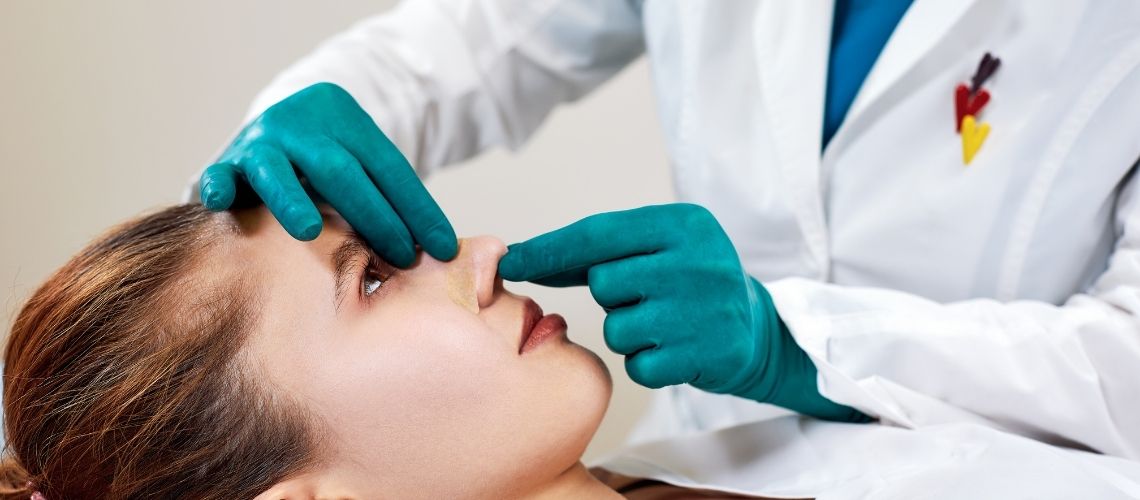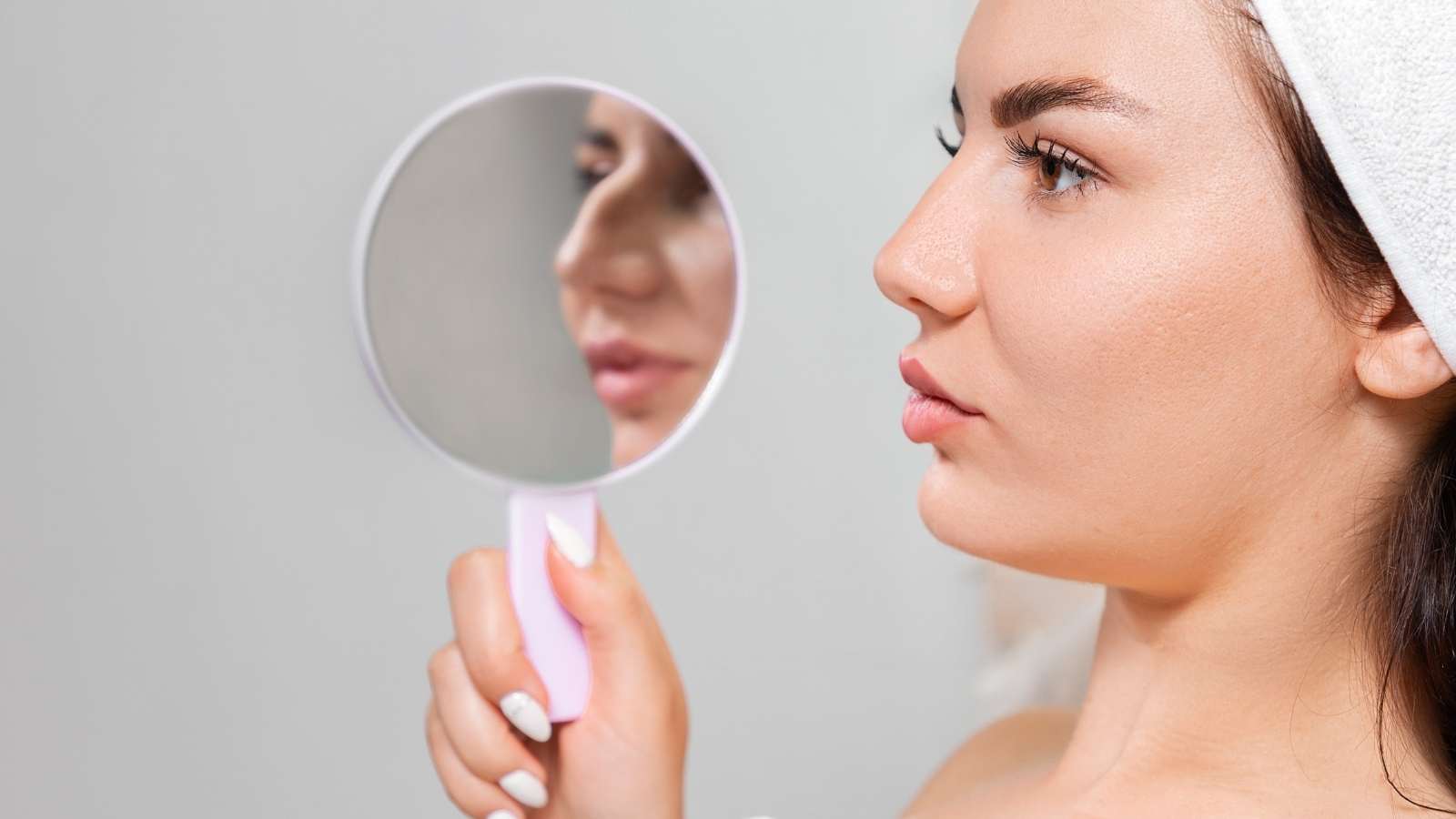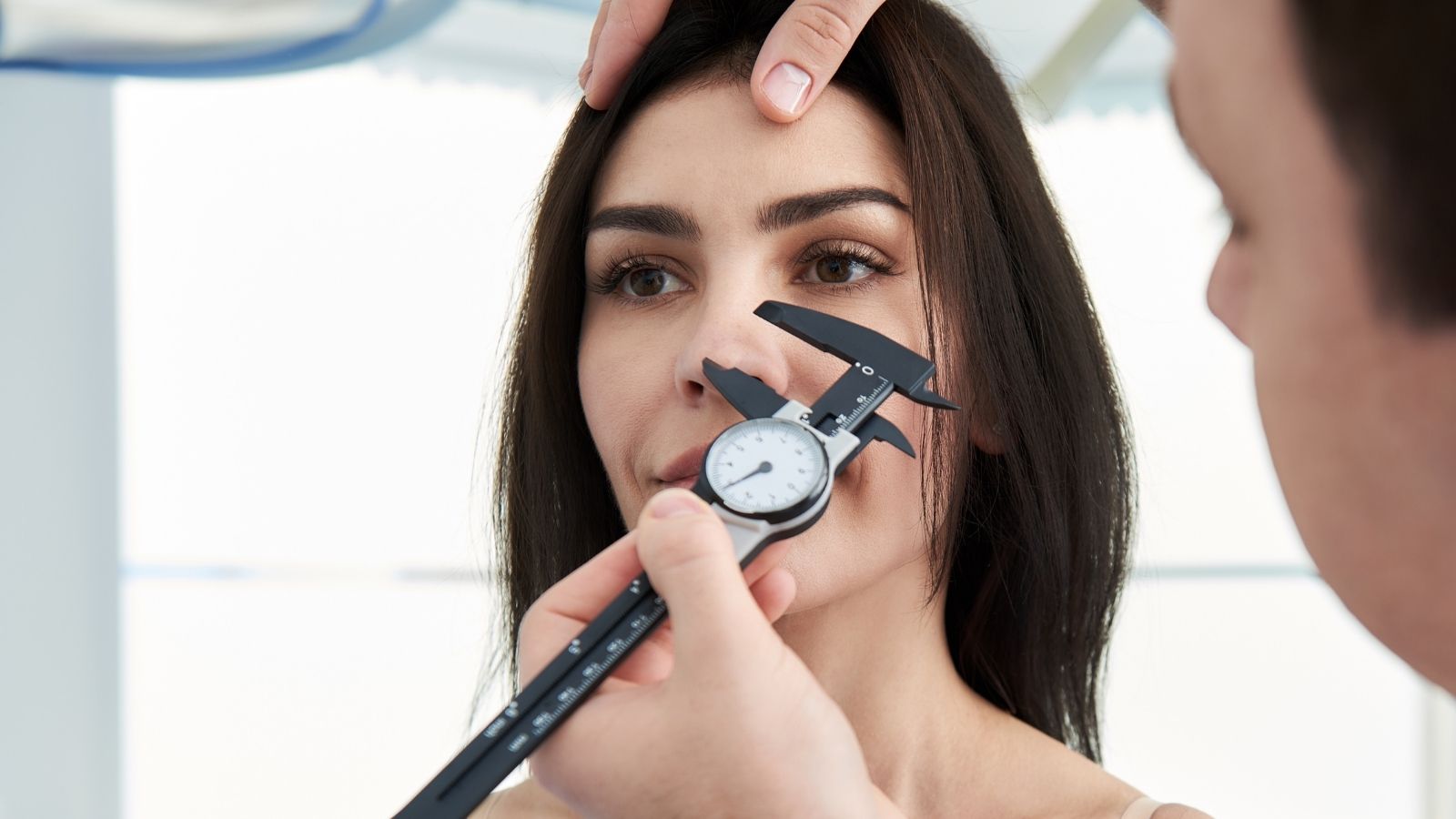
Dorsal Hump Removal in Turkey
Eliminate unwanted bumps on your nasal bridge with Dorsal Hump Removal in Turkey. Our clinic specializes in smoothing out the nasal profile to create a straighter, more refined look. Trust Dr. Camcıoğlu’s expertise to deliver results that enhance your facial harmony without compromising on naturalness.
Cost of Dorsal Hump Removal in Istanbul, Turkey ranges between €5,000– €7,000 in 2025 depending on hospital, package, and anatomy of your nose. Check our prices, before & after photos, and patient results from the USA, UK, Canada, Australia, and the rest of the world.
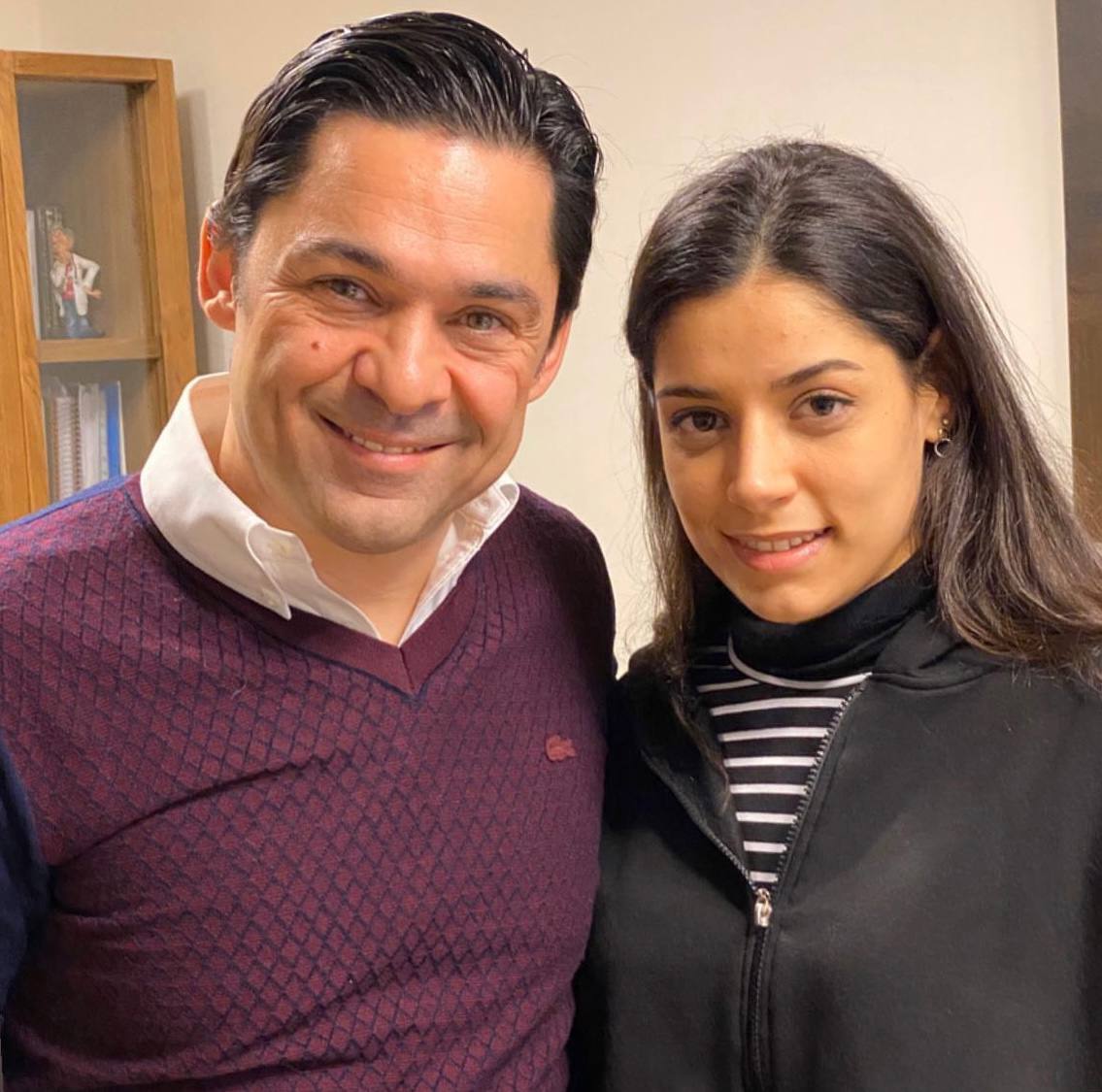
What are the Symptoms of a Dorsal Hump?
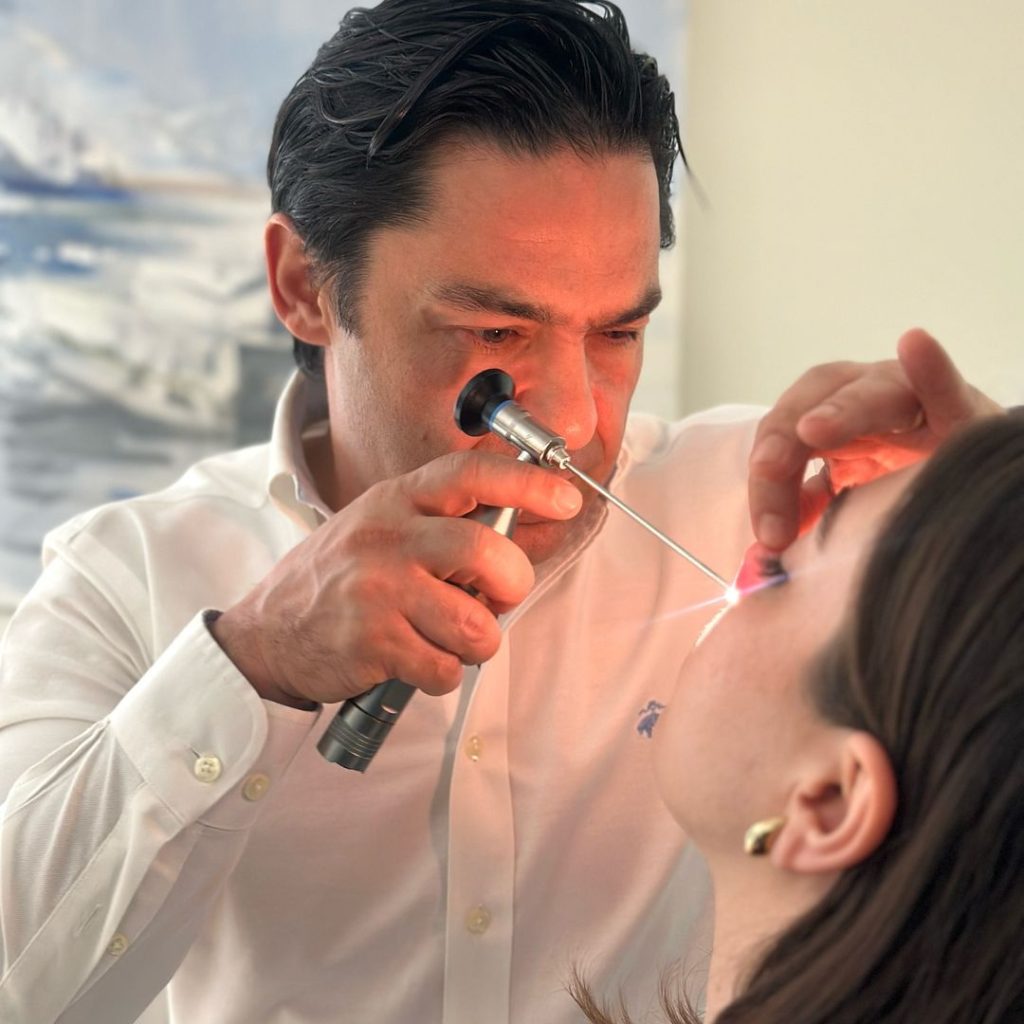
A dorsal hump presents itself with various symptoms. This condition is defined as an abnormal swelling in the structure of the nose. The swelling is usually located on the bridge of the nose and can cause aesthetic concerns. Additionally, it can be noticed with the following symptoms in and around the nose:
- Swelling or pimples on the nose
- Pain in the nostril
- Redness inside or around the nose
- Sensitivity inside or around the nose
- Feeling of a foreign object
Some of these symptoms may occur due to the irritation of the hairs lining the inside of the nose or due to blockage. Blockage can lead to the accumulation of microorganisms in the nose and an increased risk of infection. An infected nose swells, becomes red, and is sensitive to touch. These infections sometimes contribute to the formation of a dorsal hump. In severe cases, pimples inside the nostrils can also cause swelling. These symptoms indicate the presence of a dorsal hump and possible underlying problems. It is especially important to be aware of these symptoms when considering aesthetic corrections. This way, individuals can research appropriate treatment methods and seek solutions to their problems.
What are the Factors Contributing to the Formation of a Humped Nose?
A humped nose forms due to abnormal elevations of the bone and cartilage structure known as the nasal dorsum. This condition is shaped by genetic factors and various environmental influences. Genetic makeup is one of the most notable reasons for the formation of a humped nose. Having individuals with a humped nose in the family increases the likelihood of having a similar nose structure. These genetic traits usually become prominent during adolescence as the nose develops.
The nose consists of various parts, and bumps can occur in any of them:
- Nostrils: The starting point of the nasal cavity.
- Septum: Separates the nostrils and consists of bone and cartilage.
- Nasal cavity: The back part of the nose connected to the throat.
Trauma or injuries can also lead to the formation of a humped nose. Blows or improperly healed fractures can cause imbalances in the structure of the nose. These physical impacts typically result in visible deformations.
In addition to injuries, infections can also affect the formation of a humped nose. Especially, the hair follicles lining the nostrils are susceptible to infections caused by bacteria and fungi. When these infections worsen, redness and swelling contribute to the formation of dorsal bumps.
Medical conditions are other factors affecting the formation of a humped nose:
- Allergies: Often lead to swelling and blockage inside the nose.
- Polyps: Block the sinus pathways, making breathing difficult and uncomfortable.
- Boils: Hair follicle infections most commonly caused by the bacterium Staphylococcus aureus.
Finally, other factors contributing to the formation of a humped nose include interventions in the nostrils. Aesthetic procedures like nose piercings or routine activities like hair plucking can cause irritation in the nasal area, leading to the development of dorsal bumps. These irritations can eventually lead to infections and changes in the structure of the nose.
Each of these factors plays a role in the formation of a humped nose and can cause aesthetic concerns in individuals. In any case, a humped nose does not pose a health issue for most people but can affect aesthetic appearance.
6 Reasons to Get Dorsal Hump Removal in Istanbul






Post-OP
Care
Transform into the New You!
How Does Humped Nose Aesthetics Affect Respiratory Functions?
A humped nose is usually seen as an aesthetic concern and in most cases does not directly affect respiratory functions. This anatomical feature is due to irregularities in the bones and cartilage in the upper part of the nose. It should not be confused with a deviated septum, which can block the air passages in the nose and make breathing difficult.
- Humpback and breathing: The humpback is an aesthetic issue and usually does not directly affect breathing.
- Deviated septum: A different condition that can directly affect breathing.
In some cases, an injury affecting both the humpback and the septum may partially affect the airways. However, this effect is usually due to a deviated septum rather than the humpback. Removing the humpback provides an aesthetic correction but is not expected to significantly improve breathing capacity. The main motivation for removing the humpback is usually dissatisfaction with the aesthetic appearance of the nose.
Therefore, humped nose aesthetics is performed more for personal aesthetic preferences rather than solving respiratory problems. Removing the humpback is not expected to have any positive effect on breathing. This type of aesthetic procedure only changes the shape and appearance of the nose.
How is Humped Nose Aesthetics Performed with Open Rhinoplasty Method?
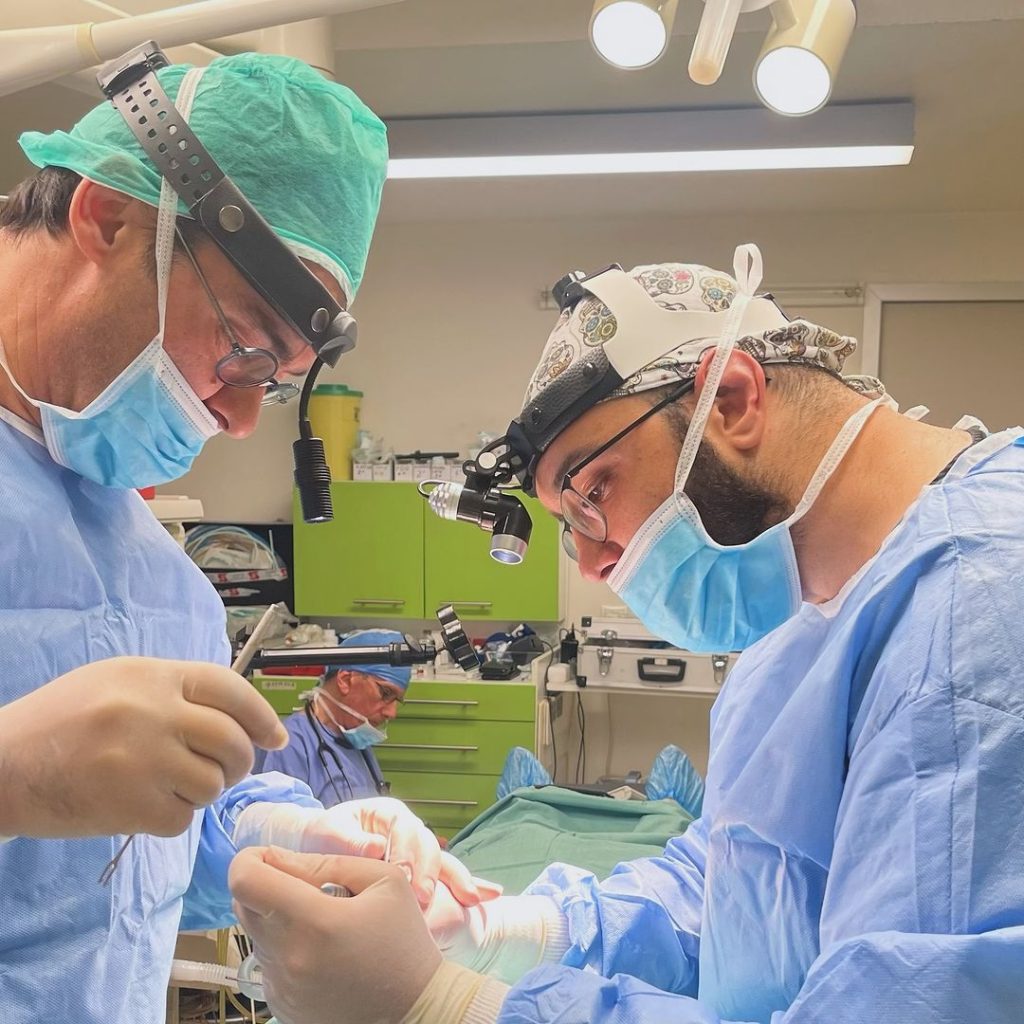
Open rhinoplasty is the most frequently used method for correcting humped noses. This technique allows for a detailed examination of the nasal structure. The surgeon can clearly see the structures under the skin, allowing for more precise corrections. During the procedure, the surgeon makes a small incision to lift the nasal skin, revealing the nasal bones and cartilage.
Advantages:
- Provides better visualization.
- Allows for more precise corrections.
- Enables the correction of complex deformities.
This method allows the surgeon full access to the nasal anatomy and necessary corrections can be made. Especially for complex nasal problems, this access allows for more successful results. The healing process begins after the procedure and is usually completed within three weeks. During the first week, the nose is protected with a splint or cast, which helps preserve its new shape.
In conclusion, open rhinoplasty is an effective method for correcting significant physical issues such as a humped nose. The high level of visual control that the surgeon has reduces risks during the procedure and provides more satisfying results. With this technique, individuals can achieve a more aesthetically pleasing nose structure.
Closed Rhinoplasty: A Hidden Approach in Nose Aesthetics
Closed rhinoplasty is one of the preferred methods in aesthetic nose surgery. This technique is characterized by interventions made from inside the nostrils. Therefore, it does not leave a visible mark on the face. The surgeon reshapes the nasal structure from within to achieve the desired aesthetic appearance.
- Anesthesia: This procedure is performed under general anesthesia, which is important for the patient’s comfort and safety.
- Healing Process: The healing process after closed rhinoplasty is usually faster. Most patients can return to their daily activities within a week.
Incisions made during the operation change the internal structure of the nose. Thus, the nose is reshaped according to aesthetic goals. The closed method is planned to keep the incisions inside the nostrils. This ensures that there are no visible scars after the operation.
The results of the operation can be categorized into aesthetic and functional improvements:
- Aesthetic Improvements: A smoother nasal bridge and symmetrical nasal tip.
- Functional Improvements: Increasing airway openness makes breathing easier.
The experience and skill of the surgeon are crucial in this procedure. Closed rhinoplasty requires careful pre-evaluation and detailed planning, considering the overall aesthetic balance of the face. The compatibility of the nose with other facial features increases the success of the operation.
In conclusion, closed rhinoplasty offers both aesthetic and functional improvements. It is an ideal option for those who want to achieve nose aesthetics without visible scars. When performed by an experienced surgeon, this method can significantly enhance facial beauty. With comprehensive healing and proper care, the patient can return to their social life shortly after the operation.
What Are the Non-Surgical Methods for Humped Nose Aesthetics?
Non-surgical nose aesthetics offers an attractive alternative for individuals with aesthetic concerns. This method does not require surgical intervention, and the results are usually temporary, allowing the individual to make different aesthetic decisions over time. During the procedure, the plastic surgeon uses special dermal fillers. These fillers smooth out the irregularities on the nasal bridge, providing a more even appearance.
- Duration of the procedure: Approximately half an hour.
- Type of anesthesia: Topical anesthesia is used.
- Permanence of results: Can last from 6 months to 2 years.
This method is more economical compared to traditional rhinoplasty. Its lower cost makes this procedure more accessible for many people. Additionally, the risk of complications with non-surgical nose aesthetics is lower. Patients can return to their daily activities immediately after the procedure, which means there is almost no recovery period. This is a great convenience for individuals with a busy work schedule.
In conclusion, non-surgical nose aesthetics is an ideal solution for those seeking quick and minimal intervention to improve nose aesthetics. This method stands out as an effective alternative in terms of both time and cost.
Is There a Chance of Dorsal Hump Reformation?
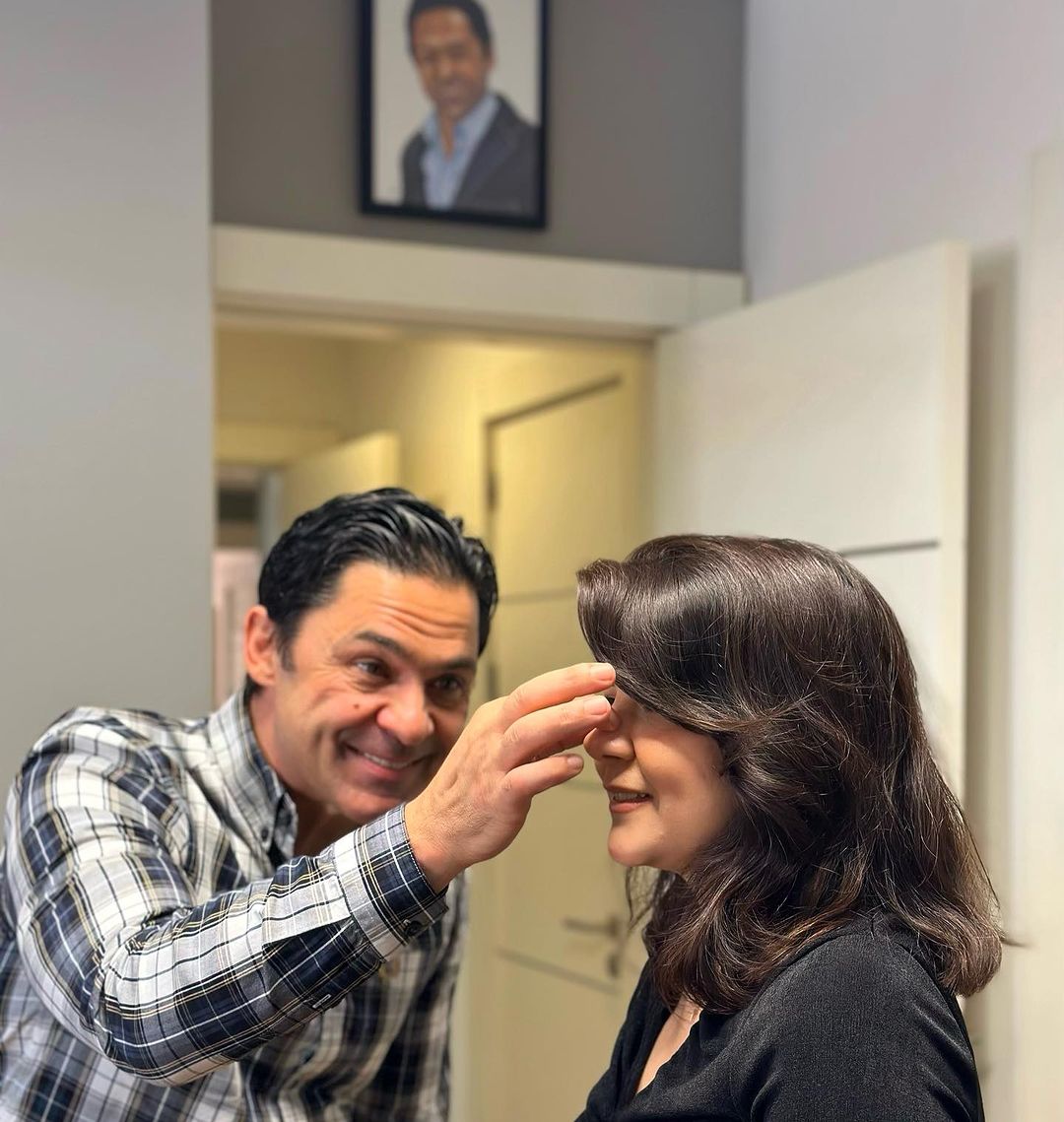
One of the issues that individuals may experience after rhinoplasty is the reformation of bumps in the operated area. Despite the removal of bone and cartilage, small bumps may sometimes redevelop. This usually occurs due to the formation of callus-like tissue.
- During the healing process, the operated area may appear swollen and enlarged. This is a normal reaction.
- Swelling after surgery usually subsides within a week. However, it is expected that the tissues will settle properly during this period.
- Surgical techniques and post-operative treatments are of great importance in preventing the reformation of dorsal bumps.
If the healing process after rhinoplasty is carefully managed, the reformation of dorsal bumps can be minimized. Surgeons constantly improve their techniques, which helps reduce the risk of reformation. On the other hand, each individual’s tissue may react differently, and small bumps may reappear in some people.
In conclusion, the reformation of dorsal bumps is possible, but this can be largely controlled through surgical intervention and careful management of the healing process. As a precaution, regular post-operative check-ups and adherence to the doctor’s recommendations are effective in preventing reformation.
How Much Does a Dorsal Hump Removal in Turkey in 2025 ?
The cost of a Dorsal Hump Removal in Istanbul, Turkey, typically ranges between €5,000 and €7,000. The price can vary depending on several factors, such as the surgeon's experience, the complexity of the procedure, the clinic's reputation, and additional services included in the package.
| Average Dorsal Hump Removal Cost (in Euros) in 2025 | |
| United Kingdom | €16,600 – €19,000 |
| United States | €14,200 – €23,400 |
| Canada | €16,000 – €19,000 |
| Australia | €23,800 – €37,800 |
| South Korea | €9,400 – €17,200 |
| Ireland | €13,000 – €15,000 |
| Germany | €11,000 – €13,000 |
| Netherlands | €11,000 – €13,000 |
| France | €11,000 – €13,000 |
| Turkey | €5,000– €7,000 |
Frequently Asked Questions
A humped nose can also be corrected with non-surgical methods. These procedures include temporary fillers with hyaluronic acid and permanent fillers with stem cell therapy. Both methods can be applied without causing pain or discomfort to the patient. Especially the use of hyaluronic acid can temporarily correct the appearance of the nasal hump. However, such non-surgical procedures usually do not provide permanent results. Therefore, the most appropriate treatment method is determined according to the patient’s expectations and the specialist’s recommendations.
A humped nose surgery usually takes two hours. However, depending on additional procedures to be performed on the nose, this duration may be extended. For example, if narrowing of the nostrils or correction of the bone structure on the nasal bridge is required, the operation time may increase. Therefore, the duration of the operation may vary according to the patient’s needs. It is important to consult with your doctor before the surgery and get information about the duration of the procedure.
The formation of a hump after nose aesthetics is usually temporary. During the recovery period, the nasal tissues and bones reshape. The temporary humps seen during this period can smooth out on their own within a few months. However, in some cases, these humps may become permanent. Permanent hump formation may require additional treatment or intervention. Especially in patients with thin skin, the hump may be more pronounced. Patients with thick skin are less affected by this situation as the humps can be more easily covered by the skin.
The height of the nasal tip is usually corrected during humped nose surgery. This procedure involves bringing the nasal tip projection to the ideal level determined by the doctor. Thus, the nasal tip achieves an elevated appearance. However, the degree of nasal tip elevation may vary depending on the patient’s facial structure and aesthetic goals. Therefore, the elevation of the nasal tip may not always be at the same level. The aim of the surgery is to improve the aesthetics of the nose and provide a harmonious appearance with the face.
To ensure a natural appearance of the nose after humped nose aesthetic surgery, several steps are followed. First, the experience of the surgeon plays a critical role in this process. During the surgery, the nasal bones and cartilage are carefully shaped, which helps correct the hump on the nasal bridge. During the recovery period, the inside of the nose should be regularly washed and the crusts formed should be gently cleaned. Additionally, activities that exert pressure on the nose should be avoided, and heavy physical activities should be refrained from. The massage techniques recommended by the doctor can be effective in reducing swelling and edema. The healing process may vary depending on the skin type, with thinner skin healing faster and thicker skin taking longer.
There is a risk of the nasal hump re-forming after humped nose aesthetic surgery. This is usually due to insufficient cartilage support after the surgery. Insufficient cartilage support causes stepping between the bone and cartilage, and the hump may re-form. Additionally, excess bone tissue formed during the healing process can lead to fullness and widening of the nasal bridge. These issues usually smooth out on their own within a few months. However, in some cases, surgical intervention may be required.
A humped nose is seen in various ethnic groups, especially those of South Asian, Middle Eastern, and Mediterranean descent. It can also be found in Europe and other regions. This feature can appear in different communities worldwide due to genetic diversity. Therefore, individuals with a humped nose can be found across a wide geographical and cultural spectrum. Although it is more common in some regions, a humped nose is a globally encountered feature.
A humped nose is an aspect that needs attention both aesthetically and health-wise. This nasal structure can negatively affect one’s appearance and lead to breathing problems. The hump on the bridge of the nose can obstruct the airways, preventing proper and comfortable breathing. Therefore, a humped nose can be related to health issues as well as aesthetic concerns. Airway obstruction can lower a person’s quality of life and cause health problems.
A nasal hump usually begins to appear during adolescence. In girls, nasal growth starts earlier and is completed around the ages of 16-18. In boys, nasal growth starts a bit later and can continue up to the age of 25. Therefore, the full development of a nasal hump can vary based on gender and individual growth.
Scientific evidence shows that natural methods, exercises, or devices are ineffective in correcting a nasal hump. This is because the nasal structure is composed of bone and cartilage. Cartilage, in particular, tends to revert to its original shape after temporary effects. Therefore, medical professionals generally recommend surgical intervention for permanent changes in the shape and structure of the nose. Thus, it is not possible to correct a nasal hump through natural methods.
A humped nose can obstruct breathing and have negative effects. Especially, the curvature of the nasal bridge can make breathing difficult, reducing the quality of daily life. Additionally, individuals with a humped nose may frequently experience nasal congestion and feel tired due to insufficient oxygen intake. Furthermore, the curvature of the nasal bone can lead to snoring and sleep apnea during sleep. Therefore, a humped nose can make breathing difficult and cause various health problems.
For nasal hump rasping surgery, girls must be at least 18 years old. Additionally, boys must be at least 22 years old. These ages mark the completion of bone development. Therefore, nasal hump rasping surgery is generally performed for girls at 18 years and for boys at 22 years. It is important to adhere to these age limits. Thus, individuals below the specified ages should not undergo nasal hump rasping surgery. However, those who have completed bone development can safely undergo this surgery.
One of the Best Clinic Team for Dorsal Hump Removal in Turkey
Dr. Alev Camcıoğlu is considered to be one of the best Dorsal Hump Removal surgeon in Turkey. You can check Dorsal Hump Removal reviews here.

Op. Dr. Alev Camcıoğlu
Rhinoplasty Surgeon

Aylin Uyuşmak
Clinical Coordinator

Serra Sevgili
Clinical Assistant

Sema Yapıcı
Operating Room Nurse




